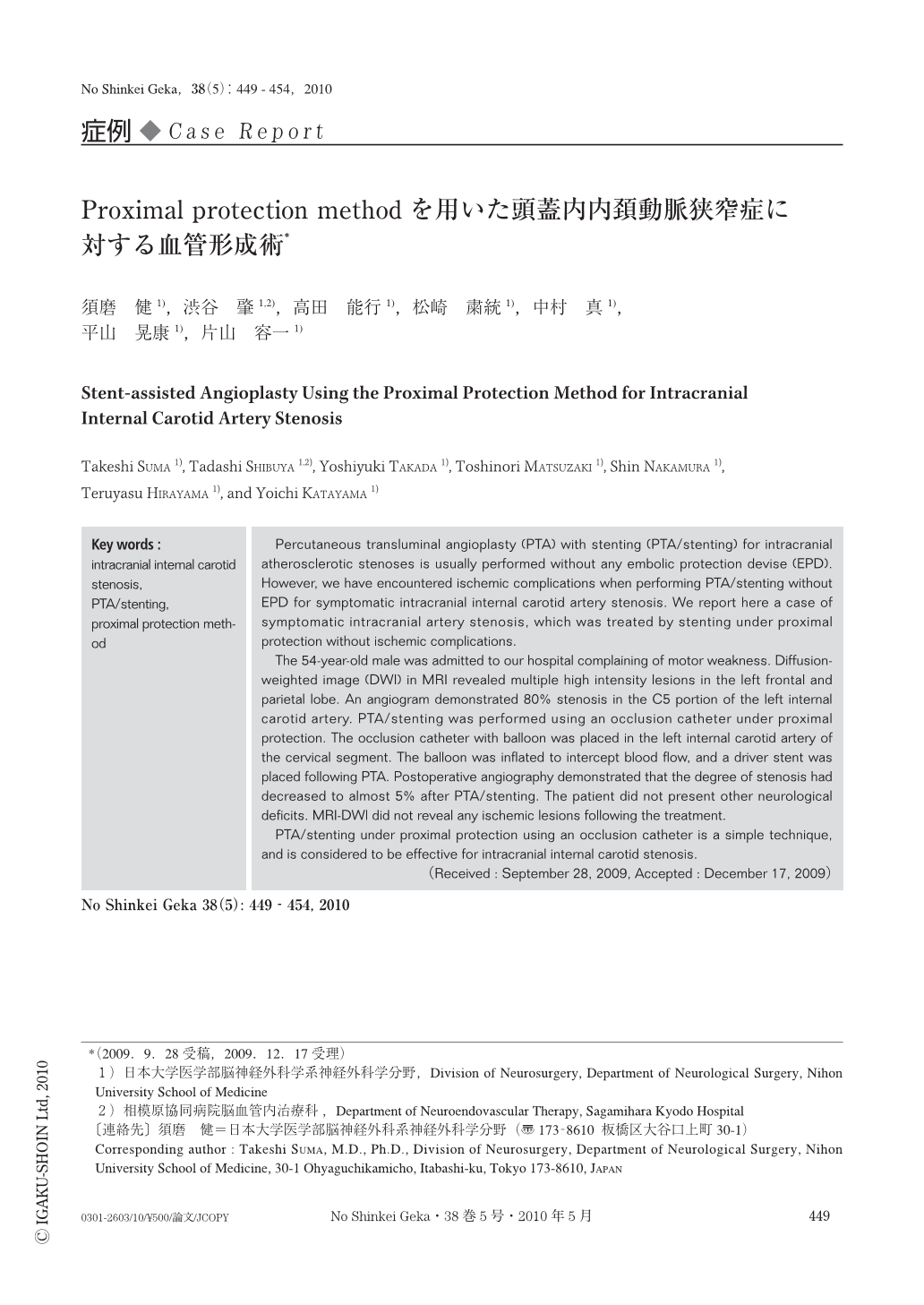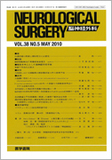Japanese
English
- 有料閲覧
- Abstract 文献概要
- 1ページ目 Look Inside
- 参考文献 Reference
Ⅰ.はじめに
頚動脈狭窄症に対するステント留置術(carotid arterial stenting:CAS)においては,バルーン型やフィルター型のembolic protection device(EPD)によって手技中のdistal embolismを予防している7).しかしながら,頭蓋内内頚動脈狭窄症に対する血管形成術においては,安全に使用可能なEPDが現在のところ存在せず,distal embolismを防止するためのprotectionは行われていないことが多い.以前,われわれは頭蓋内内頚動脈狭窄症に対してembolic protectionなしに血管形成術を行い,虚血性合併症を経験した.そこで,虚血性合併症を防止するため,proximal protection methodを用いた血管形成術を考案し,合併症を発生させることなく治療できた症例を経験したので報告する.
Percutaneous transluminal angioplasty (PTA) with stenting (PTA/stenting) for intracranial atherosclerotic stenoses is usually performed without any embolic protection devise (EPD). However,we have encountered ischemic complications when performing PTA/stenting without EPD for symptomatic intracranial internal carotid artery stenosis. We report here a case of symptomatic intracranial artery stenosis,which was treated by stenting under proximal protection without ischemic complications.
The 54-year-old male was admitted to our hospital complaining of motor weakness. Diffusion-weighted image (DWI) in MRI revealed multiple high intensity lesions in the left frontal and parietal lobe. An angiogram demonstrated 80% stenosis in the C5 portion of the left internal carotid artery. PTA/stenting was performed using an occlusion catheter under proximal protection. The occlusion catheter with balloon was placed in the left internal carotid artery of the cervical segment. The balloon was inflated to intercept blood flow, and a driver stent was placed following PTA. Postoperative angiography demonstrated that the degree of stenosis had decreased to almost 5% after PTA/stenting. The patient did not present other neurological deficits. MRI-DWI did not reveal any ischemic lesions following the treatment.
PTA/stenting under proximal protection using an occlusion catheter is a simple technique,and is considered to be effective for intracranial internal carotid stenosis.

Copyright © 2010, Igaku-Shoin Ltd. All rights reserved.


